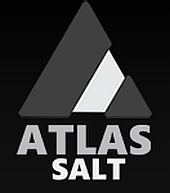 Winston drills four ft of 7.75 g/t Au at Winston
Winston drills four ft of 7.75 g/t Au at Winston
WINSTON GOLD OUTLINES NEW HIGH-GRADE GOLD VEIN
Winston Gold Mining Corp. has been able to outline a high-grade gold vein which could be amenable to underground mining.
“New drill results, outlined below, combined with earlier reported assays from the Edna trend released in December (press release Dec. 13, 2016), indicate that we have outlined a potentially minable vein which we are calling the Edna-West vein,” stated Murray Nye, chief executive officer and director of Winston Gold Mining. “The steeply dipping Edna-West vein currently has a strike length of 407 feet (124 metres) and a vertical extent of up to 150 feet (45.7 metres). Our next step will be to further define the vein with the goal of sighting an exploration adit to access it.”
The key drill intercepts that outline the vein include:
- W1633 intersected 2.3 feet averaging 1.3 ounces per ton or (44.57 grams per tonne) gold (press release dated Dec. 13, 2016).
- W1635 cut 4.8 feet averaging 0.303 ounce per ton (10.39 g/t) gold (press release dated Dec. 13, 2016).
- W1647 hit four feet averaging 0.226 ounce per ton (7.75 g/t) gold.
- W1650 intersected one foot averaging 0.427 ounce per ton (14.64 g/t) gold.
The historic Edna mine produced ore from northeast-oriented flat veins (dipping minus 20 degrees to the northwest) and steep veins (dipping minus 60 degrees to the northwest). The new Edna-West vein is oriented in an east-west direction and dips steeply to the north at an angle of about minus 75 degrees.
“We believe the Edna-West vein may be a late-stage mineralized vein that is younger than the both the Edna and Custer vein systems. As a result, it may continue eastward past the point where it intersects the Custer vein,” commented Mr. Nye. “The vein remains open for expansion at depth and along strike to the east and also to the west for a few hundred feet where it’s most likely cut off by a significant regional fault.”
Holes W1646, W1647 and W1648 were drilled from pad 8, located 300 feet (91.4 metres) west of the historic Edna mine. Hole W1649 was drilled from pad 7, a 100-foot (30 m) step-out to the west of pad 8 and hole W1650 was drilled from pad 6, another 100-foot (30 m) step-out west of pad 7.
The width of the Edna-West vein appears to vary from one foot to over five feet over its currently known strike length. The phase 1 drill program has intersected many narrow veins within the Edna trend and true width has been difficult to determine since many of these veins are associated with fault breccia and fault gouge and it is not possible to determine a proper core angle.
Refer to the associated table for details of the drill holes discussed in this release.
Hole From To Interval Interval Gold Gold
No. (ft) (ft) (ft) (m) (oz/t) (g/t)
W1646 NSI NSI
W1647 86 88 2 0.61 0.155 5.31
306 308 2 0.61 0.278 9.53
356 360 4 1.22 0.226 7.75
W1648 NSI NSI
W1649 NSI NSI
W1650 125 126 1 0.30 0.521 17.86
382 383 1 0.30 0.427 14.64
Note
* NSI -- No significant intercepts.
The company expects to receive final assay results from the remaining few holes of the phase 1 drill program shortly. A total of 33 holes was drilled totalling 12,428 feet (3,788 metres). A phase 2 drill program is now under way. It is designed to further define the Edna-West vein and will ultimately aid in the placement of an exploration adit.
The Winston gold project is central to a historic precious and base metal mining district in which most of the ore was mined from tightly structurally controlled high-angle fissure veins and lode/replacement zones. Reports indicate that more than 100,000 ounces of gold were recovered from these underground mines in the late 19th to early 20th century from about 150,000 tons of ore (Earle, 1964; Schell, 1963).
Sampling methodology, chain of custody, quality control and quality assurance
All sampling was conducted under the supervision of the company’s project geologists and the chain of custody from the drill to the sample preparation facility was continuously monitored. A blank or certified reference material was inserted approximately every 10th sample. The samples were delivered to Norris Labs Inc., in Norris, Mont., where they were crushed, pulverized and the sample pulps digested and analyzed for gold using fire assay fusion and a 50-gram gravimetric finish.
Qualified person
The scientific and technical content and interpretations contained in this news release have been reviewed, verified and approved by Dr. Criss Capps, PhD, PGeol, an independent consultant to Winston Gold. Dr. Capps is a qualified person as defined in National Instrument 43-101 standards of disclosure for mineral projects.
































